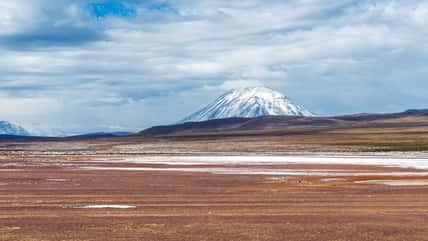Vikings Searching For Walrus Ivory Might Have Encountered Indigenous Americans Hundreds Of Years Before Columbus Did

Hundreds of years before Christopher Columbus arrived in North America, Viking Age Norse people may have encountered Indigenous Americans while searching for walrus ivory in the High Arctic, according to a new study.
Walrus ivory was a highly valued commodity in medieval Europe. It was supplied by Norse intermediaries.
They traveled across the North Atlantic to seek out the product, and in the process, they established settlements in Greenland and Iceland.
However, the exact locations of where the ivory came from have long been unclear. The new study has suggested that walrus ivory was harvested in remote hunting grounds in the High Arctic. They were imported into Europe from Norse settlements in Greenland.
A research team used high-resolution genetic sourcing techniques to identify hunting grounds in the High Arctic, particularly the interior Canadian Arctic and the North Water Polynya, which is an area of open water surrounded by sea ice. It lies between Greenland and Canada in northern Baffin Bay.
These regions are well beyond the areas traditionally linked to ivory harvesting activities by the Greenland Norse.
The Viking Age was a period that took place between the late 8th and 11th centuries. During this time, seafaring Norse people from Scandinavia, called Vikings, explored, raided, colonized, and traded across Europe and beyond.
At some point, Norse ivory harvesting spread into the remote parts of the Arctic. As a result, Vikings may have run into Indigenous peoples of the North American Arctic and possibly traded ivory with them.
“There has been a lot of interest in Vikings and the walrus ivory trade in the last 10 years, but it is very Eurocentric. We wanted to know what was happening out in the remote Arctic hunting grounds, especially where the ivory was coming from,” said Peter Jordan, one of the senior authors of the study with the Department of Archaeology and Ancient History at Lund University in Sweden.

ondrejprosicky – stock.adobe.com – illustrative purposes only, not the actual walruses
“We had no idea the walrus ivory was coming from such remote parts of the Arctic. This is big news. The exciting implication is that ivory shipped back to Europe was coming from remote High Arctic areas inhabited by Arctic Indigenous peoples,” Jordan continued.
In these places, the Norse likely came into contact with other cultures, such as the Thule Inuit, who are the ancestors of the modern Inuit in Greenland and Canada.
According to Jordan, it represents one of the earliest human interactions across the globe after humanity expanded out of Africa tens of thousands of years before.
Since ivory was coming from remote areas where both the Norse people and Indigenous Americans operated, it is likely they were in the same place at the same time, searching for the same natural resource. The Tuniit, another older North American Arctic Indigenous group, may also have been present.
The researchers reached this conclusion after extracting ancient DNA from walrus samples recovered from various locations across the North Atlantic Arctic.
Then, they matched the genetic profiles of the walrus artifacts back to specific Arctic hunting grounds.
The study was published in Science Advances.
Sign up for Chip Chick’s newsletter and get stories like this delivered to your inbox.
More About:News





